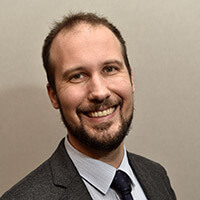Three dimensional objects have always fascinated me. And seen from this angle, the planetary-tellurium is a prodigious construction. It combines the poetry of the movement of the planets with impossible mechanical constraints. To make one today involves first of all bringing a watch making piece alive, the last copy of which was built at the end of the 19th century. But it also represents a challenge, that of presenting a maximum of planets with all the complications this involves, and to run the whole thing with a mechanical engine and not quartz as is often the case in big pieces of this kind. In fact the planetary-tellurium represents a technical paradox, a challenge that I wanted to take up. I quickly saw that this involved inventing something spectacular.
While I was still working for the Matra group, I saw one day an astrolabe made by Hour-Lavigne, one of the group’s brands that no longer exists today. Its complexity appealed to me and I wanted to know more about these big pieces. Work exploring the archives gradually led me to planetary-telluriums and to their history that I traced back to its origins.
In 1998 when I was still at Mauboussin and Mille watches didn’t exist, I contacted the manufacturers Stephen Forsey and Robert Greubel. I wanted to know if they would be motivated by such a project. I was surprised to learn that they had already thought about it themselves. They accepted and it marked the start of the venture.
Ten years of which 50,000 hours was spent on research and development alone. We started from scratch, everything had to be invented. If it lasted so long it was because I wanted this planetary-tellurium to respect the three precepts that characterise Richard Mille products: the best of innovation, the best design and architecture and the best of watch making culture. To this I added my desire to create an easy-to-use device.
Development and construction mobilised a team of approximately ten people. The House of Greubel and Forsey looked after the design, which led it to hire an astrophysicist capable of doing all the calculations for the movement of the planets. Thanks to him, the device displays exceptional precision. The biggest error concerns the terrestrial axis that gains 1 degree every 7.7 years. In Geneva, Olivier Vaucher was in charge of manufacturing the celestial bodies and the watch maker Etienne Christian de Porrentruy looked after the assembly. In the end several subcontractors intervened like Horométrie and Valgine that I am involved with.
Each piece was a headache! We only had to modify one element for ten others to be thrown out just behind. Even the assembly made our lives difficult and even today some pieces have gone back to the workshops to be improved. The earth, for example, should be made out of gold. But it has been worked on several times before finally being made from silver due to a mass that was too high that threw out its axis. The size of the object and the forces in play also influenced our technical choices. This is why the movement is equipped with a release escapement rather than a pallet escapement because it interferes a lot less with the balance.
We’ve all been tired at one time or another. On seeing the finishing line get further away day after day, each of us experienced a stage when we lacked the strength to go on. Motivation came from the passion we had at the start of the project. But this exhaustion affected other people. Potential customers also experienced a certain lassitude. The more the deadline was put back, the less they believed in it. Presenting it late to the public meant there was a risk of its presentation going unnoticed, which wasn’t the case.
No. There are 10,000 ways of expressing yourself in watch making, either through a planetary-tellurium, with small series or differently again. Take Patek Philippe or François-Paul Journe, they have achieved extreme levels of complexity on a small scale. This freedom of expression is what is so delightful about watch making. Furthermore anything goes today, which is a godsend! I think moreover that if watch makers stopped copying one another they would express themselves even more freely.
All of them! Nothing was simple or easy in this planetary-tellurium. Yet one of the most arduous tasks was to convince the subcontractors to embark on manufacturing unique pieces. This represents an additional work load for them. Furthermore it wasn’t all that easy finding the right manufacturer and the right artist.
It will be finished this summer, from July. Its price has been fixed at five million Euros but I’ve not yet taken an interest in the way the sale will take place. The original, quirky idea of an auction appeals to me a great deal.
In the beginning I thought of manufacturing three copies. But the planetary-tellurium is undoubtedly too complicated to realise, so there won’t be anymore.
















